|

Joined: 2004/12/2
From Helsinki, Finland
Posts: -1
Group:
Registered Users
|
R.M.S. Titanic has fascinated writers and moviemakers for as long as the story has existed. The luxury liner striking an iceberg in the dead of night in the middle of the Atlantic Ocean and sinking in the most peculiar circumstances has inspired many of a man to create imaginary stories of the heroes and villains of the disaster. The legends have gotten even more colourful as the number of the survivors has diminished by the amount of time passing by.
To develop my long-lasting interest in Titanic I have concentrated in my review on the books that I haven’t read earlier. For this reason I chose a reprinted copy of the New York Tribune dated on the 16.04.1912, Robin Gardiner’s Titanic - the ship that never sank?, Nick Barratt’s Lost Voices from the Titanic and Don Lynch’s Ghosts of the Abyss. At the same time I was quite surprised that I found so few books and other important prints about the topic from Glasgow, important shipping city itself and neighbour to the home of Titanic.
On this occasion I do have to mention the best-known publications about the subject though I am not going to concentrate on them. The most famous publication about the disaster is, in 1955 published, Walter Lord’s book A Night to Remember, which combined together for the first time the stories of the victims of the disaster and tried to create an overall picture of what really happened. My own favourite is Don Lynch’s Titanic: Illustrated History telling the story of the gigantic liner included with beautiful hand painted pictures. One more book that needs to be mentioned is Titanic, Triumph and Tragedy, which is considered to be the most conclusive history of the liner.
I constructed my review starting with the New York Tribune telling about the sinking of the liner and then concentrating on Nick Barratt’s book about the oral history behind the accident. After having the quite common issues to start with I changed my perspective and started to look at Robin Gardiner’s book questioning the whole accident and even the ship being Titanic at all. For the last part of the review I dived under the surface and revisited the wreck of the ship with Dan Lynch’s book and tried to find out the condition of the ship today and what it can tell about the story. For the conclusion I gathered the common elements of the sources tying the stories together as something of a bigger picture.
Human tragedy for sale
A reprinted copy of the New York Tribune, dated on the 16th of April 1912, creates a captivating, though questionable, time window on the first couple of days after the great Titanic disaster. This densely written broadsheet newspaper introduces a novel doubt on the supremacy of mechanical inventions by admitting that the “unsinkable ship” (1) faced its fate in just couple of hours. It becomes clear after several pages of shocking headlines that the press of yesterday sought safety in the time of uncertainty from the three topics one can easily find from the newspapers even today – fame, fortune and human tragedy.
After realizing that the newspaper was “reprinted with permission”(2), but without any mention about the publisher or the publishing date I proceeded my research with a hint of scepticism and a pile of books about the Titanic backing up my common knowledge gathered during several years of hobby-based Titanic interest. The only thing reassuring me that the reprint is a non-altered one is the fact that the newspaper was bought in one of the biggest Titanic exhibitions in the world situated in Las Vegas.
Bearing in mind the unknown origin of the reprinted newspaper and comparing today’s real-life streaming of news in the Internet to the remarkably slower distribution of data via telegraphs it becomes curious to realise how much correct information, even in today’s scale, the New York Tribune had gathered in only 24 hours. The wealth of the richest passengers on board, the strategic dimensions of the liner, the career of the captain, the new mechanical inventions to prevent this kind of tragedy from happening again and the estimation of the insurance loss can be regarded as examples of the rapid actions of the press in the time of no computers but manual work.
At the same time the broadsheet reveals its weaknesses to convey objective and correct information about the sinking of the ship and the situation around the actual disaster area. All the newspaper can really say about the accident itself is based on a wireless message from the captain of the Olympic stating that: ”at 2.20 a.m. the Titanic foundered. Carpathia proceeding to New York with passengers.“ (3) This uncertainty of the situation combined with the potential pressure to release the newspaper on time leads the New York Tribune to speculate and even create false story about how the career of the Titanic was ended by the iceberg in an utmost horrible way. The article’s assumption that “many of those retired were thrown out of their beds” (4) when the collision occurred contradicts with the survivor testimonies written on the book On Board the Titanic: The Complete Story with Eyewitness Account telling how “the shock was almost imperceptible”(5) and that “hundreds who had gone to their berths and were asleep were unawakened by the vibration”(6). Interestingly enough the broadsheet states the hastily combined newspapers in Britain being even worse by writing about all the passengers being saved and even the Titanic still being afloat.
Digging deeper into the pages not telling primarily about the disaster itself one can find a good example of the trans Atlantic shipping competition between the two great liner companies of the time - the Cunard and the White Star Line. With the big advertisements on page 11 announcing “ Cunard - the fastest steamers in the world”(7) and “White Star Line - the largest steamer in the world”(8) it gets very clear that the collision with the iceberg, as written in the first page, had a great scratch on the White Star Line’s reputation in the long run, but made the liner itself famous for a very long time.
On the other hand, the newspaper does not condemn anyone and at the same time tries to create heroes out of the survivors of the tragedy. It seems that the time before hearing the true stories of what happened that night on the Titanic, the time of multiple speculations on the articles, are the last glorious moments for the shipping company and the participants of the disaster to be completely innocent for what really happened.
What makes the reprinted newspaper even more interesting is its capability to provide stories about a world not having any relationship to the Titanic itself creating a reality where the Republican party with President Taft has their annual meetings, the Russian ballet dancers get more money, China begins its journey as a republic and “Broadway actress conquers wrinkles”(9). These are the everyday life news that are not interesting enough to be found from the history books about the Titanic but which construct a vivid spectrum of the values and thoughts of that era.
All in all, what makes the newspaper especially interesting are the values of the time it conveys. Newspapers have a tremendous impact on our perception of the world and by learning to interpret the meaning beyond the words one can get a glimpse of the power structure behind the publication and of the time. The New York Tribune reveals a time of the Titanic disaster, slow distribution of uncertain information and vicious competition between ocean liners, but in the end these issues are all about fame, fortune and human tragedy, the three topics that still sell the newspaper to the customer.
Compilation of evidence
Nick Barratt’s book Lost Voices from the Titanic begins with a nice introduction part including historiography, aims and structure and the sources he has used. The impressive list of the reference books such as Walter Lord’s A Night to Remember and Titanic Voices: Memories from the faithful Voyage create a strong background for the text but at the same time overshadowing questions its whole existence. Why does someone want to write yet another descriptive book about the Titanic disaster?
It is clear that the author wanted to provide “a definitive narrative of the disaster in the words of those who designed her, built and sailed on the ship, as well as contemporary accounts from the resulting inquiry” (10), but at the same time he has forgotten that this has been already done in several books, even in the ones listed in his references.
His way to divide the story into three parts starting with the background and construction of the Titanic, followed by the maiden voyage and the loss of the ship and ending with the aftermath of the tragedy is a good way to construct the story into understandable entities but is at the same time old fashioned and done in a better way before. His timelines and inquiry statements do not bring anything new to the scene, and his way to stand aside and give the authentic letters and articles of the catastrophe tell the story leaves the whole book cold and distant - a compilation of facts without any personal point of view.
Barratt states in the historiography that “the role of the academic historian is to sift through the evidence and compile a narrative, timeline or thesis” (11) and seems to take this role in his work. He continues:
…an attempt to produce an account as close as possible to what actually happened, no matter how well intentioned, not only becomes harder to achieve as time passes and eyewitnesses either change their views – coloured by subsequent media coverage or influenced by reflecting on other accounts of the event – or die out, but is also affected and shaped by what the historian considered happened: a type of natural bias. (12)
This idea of the author trying to be careful not to interfere the evidence with his own opinions seems to carry through the book and quite surprisingly creates the main problem of the issue – the author fails to explain his point of view or try to question the sources he has gathered. This impersonal way to tell a story creates a feeling of the author being just a machine collecting information for others to read.
As we shall examine later when talking about Robin Gardiner’s book Titanic - the ship that never sank? the stories around the disaster should be questioned along with the inquiry testimonies because of the complex power structure of the time. In this light it becomes clear that Nick Barratt’s work can be seen only as a compilation of mainstream views of the incident itself.
On the other hand Lost Voices from the Titanic can be regarded as a decent source of common knowledge of the topic in a strict academic structure, and in some ways similar to the copy of the New York Tribune shown earlier. Both sources include authentic letters and articles of the people involved in the disaster and create a unique picture of the atmosphere of the era.
One of the most touching parts of the book is the last interview of the last survivor Millvina Dean, who gives a face to a long life surrounded by the disaster – a warm breath in an ocean of cold facts. During the interview she continues to question herself as a hero, sees her mother as the victim of the disaster and channels her own insecurities and feelings about the long lasting shadow of the night to the stories of her family.
I can’t help wondering what would have happened if my father had survived. I look at his picture and think of my mother, and the pain she felt at the time. It must have been so hard for her to bring us back to England, to her family and farm, and start again without him. (13)
This raises the questions of how long the scar of the disaster will last in the families of those who were part of the journey and what kind of long-lasting effects it can have on the generations to come. Unfortunately Barratt doesn’t use this opportunity to go deeper and ends up feeling sorry for not being able to give his book of common knowledge of the incident to the last survivor of the disaster – the one who witnessed it all.
Questioning the sinking
Robin Gardiner’s book Titanic – the ship that never sank? creates a vibrant contrast to the mysteries behind the accident and acts as a spark firing up the conversation about the power structure behind the end of the luxury liner. By questioning the testimonies given in the numerous Titanic inquiries and bringing to light the inconsistencies related to the incident Mr Gardiner challenges the preceding publications and common knowledge of the circumstances surrounding the misfortunate ship and the White Star Line -company.
Compared to the Nick Barratt’s book and the New York Tribune this text has a clear purpose to use the common information available about the Titanic as well as the contradictions surrounding the incident to create a scandalous alternative story of what really happened and why. It becomes clear that the book is written to sell a sensation, which can be understood from the mere name as well as from the time of the first publication in 1998 – the year after the Titanic movie had started to make millions.
The book itself is constructed in a similar way with the Lost Voices from the Titanic starting from the background and construction of the liner and continuing with the maiden voyage and the sinking of the ship, but where the latter ends with the inquiries of the disaster Robin Gardiner’s book continues with the finding of the wreck in 1985 and after that introduces his own version of what happened during the night of the disaster. His interpretation’s biggest difference, when talking about the similar parts of the story with Nick Barratt, is to take into account the personal history and personalities of the people aboard the Titanic and consequently bravely question their heroism based on disputable actions during the fateful night.
Diving into the abyss
After reading about the history of the ship in various ways Ghosts of the Abyss gave a refreshing view of the fateful ship as it can be seen today on the bottom of the Atlantic Ocean. The visually beautiful book is divided into two sections written and illustrated by the “unrivalled Titanic authorities” (14) Don Lynch and Ken Marschall, and tells about the maiden voyage of the ship and the multiple diving expeditions into the wreck in 2001.
The diving expedition chapters of the book, told by Mr Lynch, are the best parts of the publication combining together many of the elements found from all the sources that I used in the review. It seems that the diving to the abyss works as a transition journey from the excessively repeated, old story of the disaster with beautiful pictures to the personal feelings raised by encountering with the slowly corroding skeleton of a ship.
The Ghosts of the Abyss delivers a similar kind of strong urge to list the well known stories of the disaster into a believable narrative as Lost Voices from the Titanic and Titanic – the ship that never sank does, and at the same time it creates a strong feeling of a particular time when combining together the feelings of uncertainty and selling of a human tragedy raised by the 11th of September 2001 terrorist attacks as well as the ones seen on the New York Tribune in 1912.
Finally, the main theme combining together all the sources was the passion to write about one of the most famous human tragedies in the history. The explanations seem to be numerous ranging from creating an objective narrative to questioning the common belief of the incident. The only book really questioning it’s own purpose was the David Lynch’s Ghosts of the Abyss telling about how the 11th of September 2001 incident stopped their work at the wreck site and made them think about their own life and relationship to disasters. In this book’s introduction written by James Cameron lies the thriving force of all books written about the Titanic in a crystallized form.
The disaster has always been the quintessential story of loss, of coming to terms with death, of heroism and cowardice, and the full spectrum of human response before, during, and after a crisis. As such, it will always be with us as one of the great lessons of history. And its mythic status endure.(15)
(1) Author unknown, New York Tribune, p.3
(2) Author unknown, New York Tribune, p.1
(3) Author unknown, New York Tribune, p.1
(4) Author unknown, New York Tribune, p.2
(5) John C. Winston, edited by Logan Marshall, On board the Titanic: The Complete Story With Eyewitness Accounts, p.28
(6) John C. Winston, edited by Logan Marshall, On board the Titanic: The Complete Story With Eyewitness Accounts, p.28
(7) Author unknown, New York Tribune, p.11
(8) Author unknown, New York Tribune, p.11
(9) Author unknown, New York Tribune, p.9
(10) Nick Barratt, Lost Voices from the Titanic, p. vii
(11) Nick Barratt, Lost Voices from the Titanic, p. viii
(12) Nick Barratt, Lost Voices from the Titanic, p. ix
(13) Nick Barratt, Lost voices from the Titanic, p. 298
(14) Don Lynch, Ghosts from the Abyss, p. 8
(15) Don Lynch, Ghosts from the Abyss, p. 11
Bibliography
Author unknown, New York Tribune, (Place of publication unknown: Publisher unknown, Year of edition unknown), Reprint of 16th April 1912
Nick Barratt, Lost Voices from the Titanic, (London: Preface Publishing, 2009)
John P. Eaton and Charles A. Haas, Titanic: Triumph and Tragedy, (New York: W.W. Norton & Company, Inc., 1995)
Robin Gardiner, Titanic – the ship that never sank?, (Surrey: Ian Allan Publishing Ltd., 2009)
Walter Lord, A Night to Remember, (New York: Henry Holt & Company, 1955)
Don Lynch, Ghosts of the Abyss, (Toronto: The Madison Press Ltd., 2003)
Leo Marriot, Titanic, (London: PRC Publishing Ltd., 1998)
John C. Winston, On board the Titanic: The Complete Story with Eyewitness Accounts, ed. by Logan Marshall, (Mineola, New York: Dover Publications Inc. 2006)
|
 Titanic.com - Titanic News, Photos, Articles & Research | Forum Index
Titanic.com - Titanic News, Photos, Articles & Research | Forum Index Titanic news
Titanic news  Critical review of some Titanic books.
Critical review of some Titanic books.
 Bottom
Bottom  Previous Topic
Previous Topic  Next Topic
Next Topic 2 Votes
2 Votes  Top
Top  Previous Topic
Previous Topic  Next Topic
Next Topic











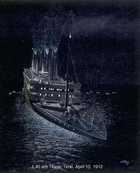
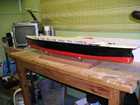



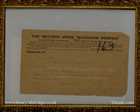

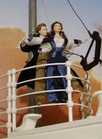

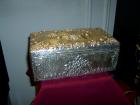

 Topic options
Topic options Print Topic
Print Topic Flat
Flat Newest First
Newest First Icestar
Icestar





 You cannot start a new topic.
You cannot start a new topic. You can view topic.
You can view topic.
